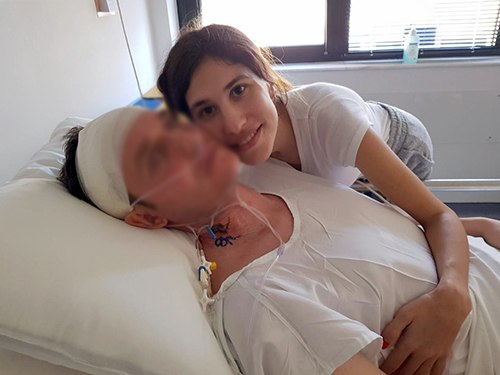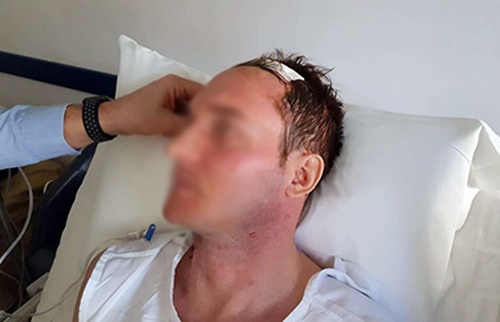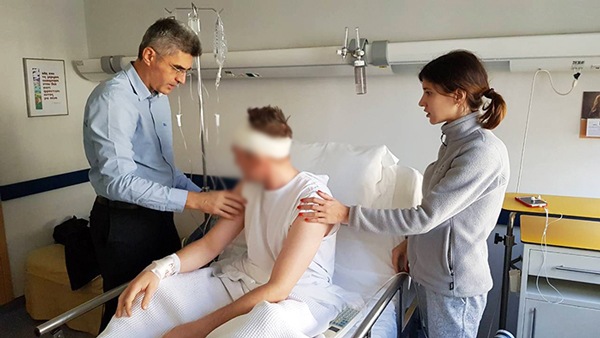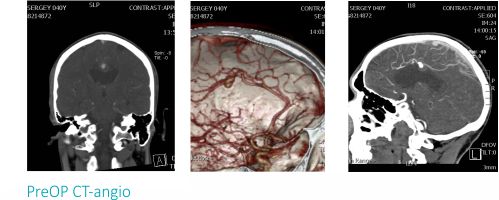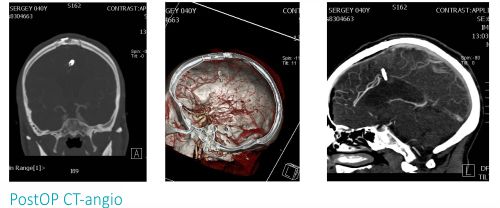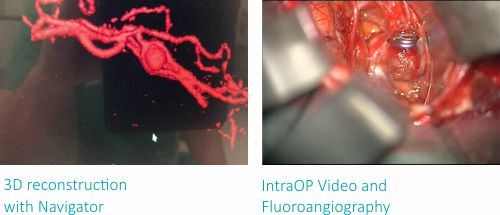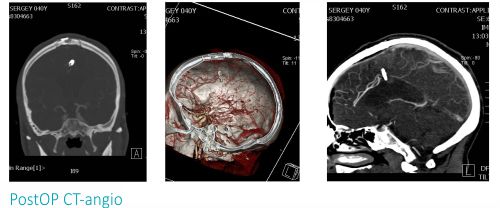
Neurosurgery
The human-centered care combined with the many years of experience of the medical staff makes the department and its people experts in the field of Neurosurgery throughout Greece and the wider region. With small, high-precision incisions and state-of-the-art techniques, we offer the patient a better quality of life and a faster recovery.
Our specialized neurosurgeons perform thousands of highly precise surgeries annually, including many challenging and difficult cases.
The Department of Neurosurgery specializes in three different areas, depending on the subgroups of neurosurgical diseases, their pathophysiology and topography. Thus, the following directions arise with the corresponding diseases of the nervous system:
Brain Neurosurgery:
- Brain tumors
- Hydrocephalus
- Vascular diseases of the brain
- Chronic subdural hematoma
- Traumatic brain injury
Spinal Neurosurgery:
- Spinal tumors
- Lumbar disc herniation
- Cervical disc herniation
- Spondylosis
- Spondylolisthesis
- Spinal fracture
Cranial and Peripheral Nerve Surgery:
- Treatment of trigeminal neuralgia
- Median nerve decompression
- Ulnar nerve decompression
Neurosurgical techniques and technology
Each direction of Neurosurgery specializes in different techniques. Below are some of the ones we carry out, depending on where the problem is located:
Brain Surgery:
- Craniotomy
- Stereotactic brain biopsy
- Valve placement for CSF drainage
- Cranial reversion in cases of chronic subdural hematoma
Spine Surgery:
- Kyphoplasty
- Percutaneous Vertebral Ligation
- Lumbar microdiscectomy
- Anterior cervical microdiscectomy
- Posterior neck approaches
Cranial and Peripheral Nerve Neurosurgery:
- Trigeminal neuralgia
- Carpal Tunnel Syndrome
- Ulnar neuritis.
Use of a surgical microscope
The specialty of neurosurgery has developed by leaps and bounds in recent decades. The improvement in quality and efficiency has been faster compared to other surgical specialties and this is because its practice is inextricably linked to technological progress.
The greatest achievement that gave a great impetus to further development was the generalization of the application of the surgical microscope. Over the years, there has been an evolution and improvement of microscopes, in which the optics have been perfected, their mechanical movement has evolved with electromagnetic control, and elements of digital technology have been added.
The greatest achievement that gave a great impetus to further development was the generalization of the application of the surgical microscope. Over the years, there has been an evolution and improvement of microscopes, in which the optics have been perfected, their mechanical movement has evolved with electromagnetic control, and elements of digital technology have been added.
With the help of the surgical microscope, we perform minimally invasive techniques and ensure three-dimensional vision and magnification of the surgical field. Using the surgical microscope requires specialized knowledge and skill.
Neuronavigation system
Another cornerstone in improving surgical conditions in the brain is the introduction and gradual improvement of neuronavigation. The neurosurgeon is now able to use an aid to orient himself and better locate the lesions to be accessed, with principles analogous to those of GPS.
With our state-of-the-art surgical navigation system, we achieve maximum precision in access to the skull and spine. The integrated camera allows careful and maximum quality navigation that elevates the skills of the neurosurgeon and gives the patient a better postoperative course.
Continuous intraoperative neurophysiological monitoring
The application of continuous intraoperative neurophysiological monitoring enables us to record data monitoring the function of the brainstem nuclei and the motor and sensory pathways or the visual pathway.
Intraoperative carotid
In addition to the aforementioned neuromonitoring techniques, intraoperative corticography (mainly in epilepsy surgeries) or brain operations with the patient awake have made it possible to perform operations near noble areas of the brain, such as the speech center, the motor areas, the base of the skull, even in the brainstem. Areas that up until now were (and possibly even today for a large portion of neurosurgeons are) the “void” of the brain. Findings of tumors or other lesions in these areas were characterized as inoperable cases.
Human resources
The possibility of presence, education and further training, as well as the work of our neurosurgeons in recognized centers abroad, have led to brain surgeons with more experience. Also, the nursing and technical staff of the department are an integral part of patient care, essential for both patients and doctors.
